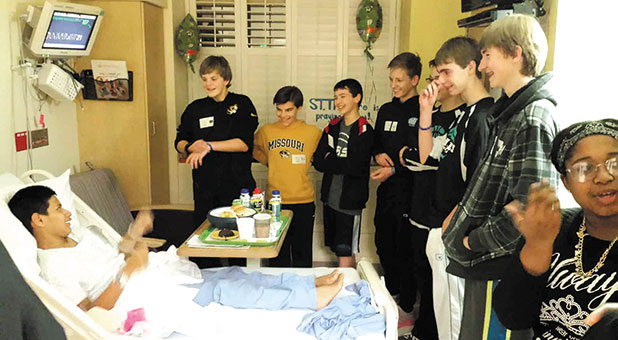Modern-Day Resurrections: Are They Real?
Medical Recoveries
The other moderating influence to reported resurrections is they may not be as miraculous as they initially appear. Restarting a person’s heart via defibrillators or cardiopulmonary resuscitation (CPR) is a regular occurrence.
Such realities stir skepticism like a report last year in the BBC News Magazine. While not naming Dr. Crandall, the story referenced an American heart surgeon who “allegedly” brought a heart attack patient back from the dead with prayer.
“But he was also using a defibrillator, and other doctors find the story entirely unremarkable,” the BBC wrote.
After West Virginia college student Zach Sandy got struck by lightning at a youth camp softball camp in the summer of 2012, the ER doctor who tended to him before the teen’s transfer to a burn center in Pittsburgh credited CPR as a primary factor in his survival.
“The key is if CPR is started at the scene,” says Dr. Anthony Kitchen, a staff member at Camden-Clark Medical Center in Parkersburg. “I resuscitated someone (recently). I shocked him, but his girlfriend had administered CPR and he was close to the hospital.”
However, even the restarting of someone’s heart doesn’t guarantee a positive neurological outcome—which is where the circumstances surrounding the cases of Zach Sandy and John Smith assume such a miraculous tinge.
Given the nature of Sandy’s injuries, Kitchen was pessimistic about the then-18-year-old’s chances of survival. When Kitchen learned earlier this year that Sandy had been released after a short time in the burn center and was doing fine, the physician was amazed.
“From a medical standpoint, it’s pretty astounding,” says Kitchen, who says so many circumstances had to line up properly that it challenges conventional theories. “So many things had to go right. For the kid not suffering damage from that and having neurological function—it would be rough for medical science to explain.”
After observers raised the question of whether the frigid water might have played an element in Smith’s survival, the doctor at Cardinal Glennon who treated Smith pointed out the outcome of such cases is usually negative.
Dr. Jeremy Garrett says although a study in the Netherlands reported that 60 percent of 160 childhood drowning victims were resuscitated after 30 minutes, many suffered brain, neurological or other damage.
Another in the Pacific Northwest noted that with cold water drowning patients, none with prolonged restriction of blood supply to tissues survived deprivation longer than 10 minutes.
While medically there are several factors that gave Smith a hope of survival, to survive fully neurologically intact is beyond rational explanations, Garrett says.
“Results like this are not what knowledgeable physicians specializing in pediatric emergency care, pediatric critical care or pediatric neurology would expect, even with the best of care,” the doctor says. “If I had not been part of John’s care from presentation to recovery, I’m not sure I would have believed it myself.”
Joyce Smith believes, citing the blind man Jesus healed. When the Pharisees demanded proof, he replied, “One thing I know: that though I was blind, now I see” (John 9:25).
“All I know is my son didn’t have a heartbeat for 45 minutes and he’s alive and flourishing,” she says. “He’s an A and B student and doing well. The naysayers can say what they want, but the proof is on my side.”
Ken Walker is a freelance writer and book editor from Huntington, West Virginia. A longtime contributor, Walker wrote about prophetic evangelism in the May issue of Charisma.
Learn more about Dr. Crandall’s miraculous resurrection prayer in this in-depth TV news story at resurrection.charismamag.com.




























































